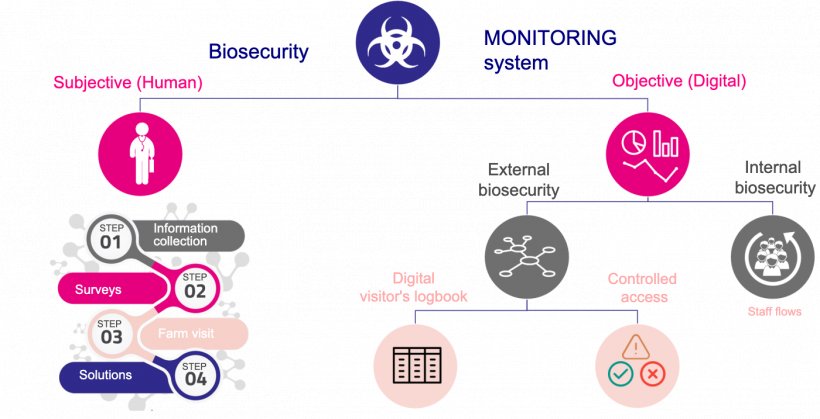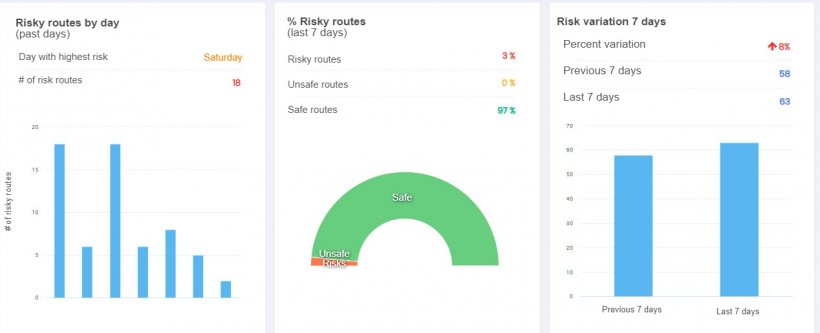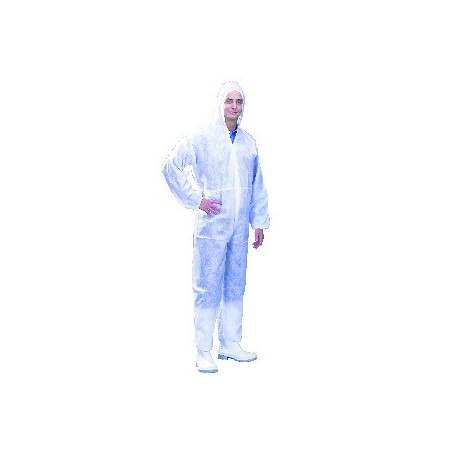Generally, biosecurity has been based on subjective compliance of protocols whose compliance could never be completely guaranteed. Today, these theoretical control measures can be complemented by new approaches and technologies that reduce the risk of non-compliance or failure to implement them.
The importance of biosecurity

Biosecurity is defined as the implementation of measures to reduce the risk of introducing and spreading pathogens; measures which improve the health status and reduce the need for antibiotics.
On our team, when we do biosecurity audits we find very similar errors all over the world related to breaches of protocol or deviations that are not acceptable, as there is not usually a head of biosecurity in place to monitor them. In addition, the work of the person in charge is complicated by the lack of objective tools for measuring the controlled parameters. Apart from this type of evaluation, we did not have other ways to objectively measure the level of biosecurity of a company or farm.
Creating a new kind of data
Biosecurity is characterized by being a transversal concept that affects all areas of production and, which adds great complexity to its effective control. Therefore, any system that helps us to monitor it in an objective, quantifiable, and automatic way is very helpful (Figure 1).

Figure 1. Biosecurity monitoring system.
Subjective monitoring encompasses the classic approach that has been used up to now, which is based on data collection from farms, surveys, and verification checklists for established tasks. To carry out this control in optimally, we recommend the following two steps:
- Conducting a standardized survey that provides an overview of the status of the farm in each of the important areas affecting biosecurity. We recommend working with Biocheck from the University of Ghent, which allows us to compare ourselves with over 2,000 farms around the world. This will allow us to have a preliminary overview of the farm's situation.
- Biosecurity audit. Aimed at understanding the farm's situation in greater depth based on the survey carried out and the inspection performed on the farm itself. Includes 4 steps:
- Collecting specific information, including at least a detailed map of the farm, health status, gilt acclimation protocol, and general biosecurity protocols.
- Processing the above, integrating it with the survey results obtained.
- Farm visit, to see the actual situation and compare it with the information received. This also includes interviews with the staff.
- Integrating all the information collected and proposing an action plan, ensuring it is subsequently carried out by holding regular meetings as part of a concrete and structured short, medium, and long term plan. This is the only way to keep interest, be consistent in efforts, and prevent being overwhelmed in the first stages.
On the other hand, objective control is based on quantifiable data that can be obtained from digital technologies, capable of accurately recording and storing information related to both external and internal biosecurity.

Figure 2: Objective data for biosecurity monitoring.
Although external biosecurity is possibly the most advanced on conventional farms, there is little data available. To address that gap, there are two options:
- Visitor's log: Replaces the traditional paper logbook, which requires too much time to search for data by hand. Instead, an electronic logbook allows data to be instantly uploaded to the web and converted into useful information.
- Access control system: these are more sophisticated methods and are installed in complex business structures or farms with a high level genetics. This system can generate instant alerts and monitor compliance with company standards. Its very nature sometimes complicates the flows and movements of farm personnel.
Soon we will see how to objectively monitor internal biosecurity, which has the main objective of preventing a disease already present on the farm from spreading to other areas. We will also see what data is generated and how we can use it.






